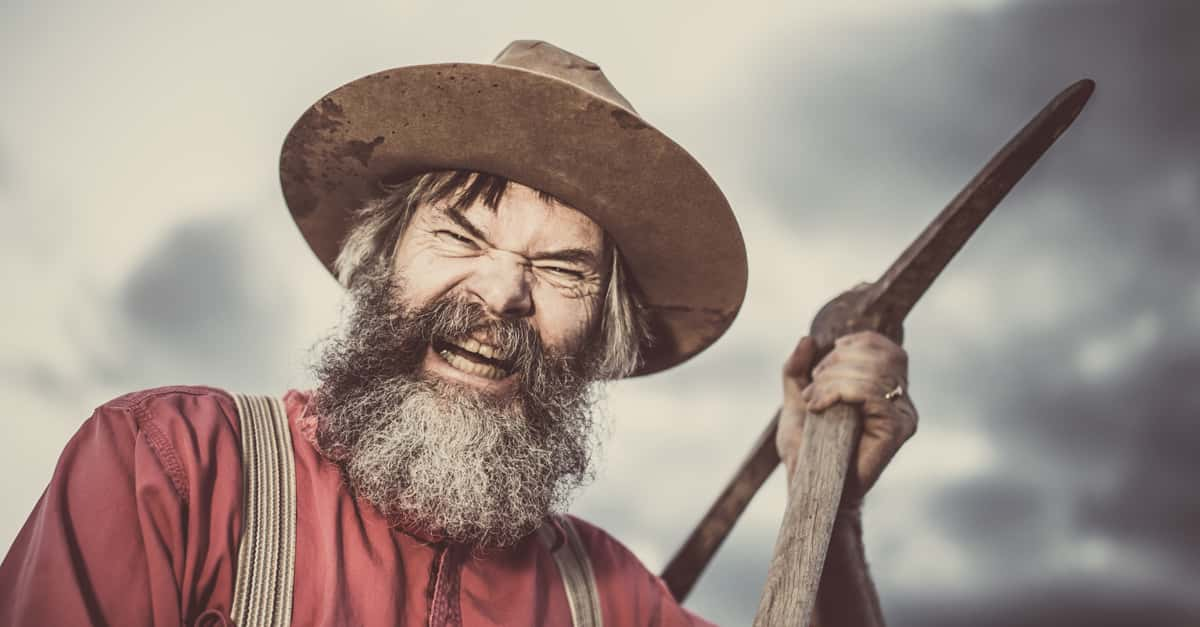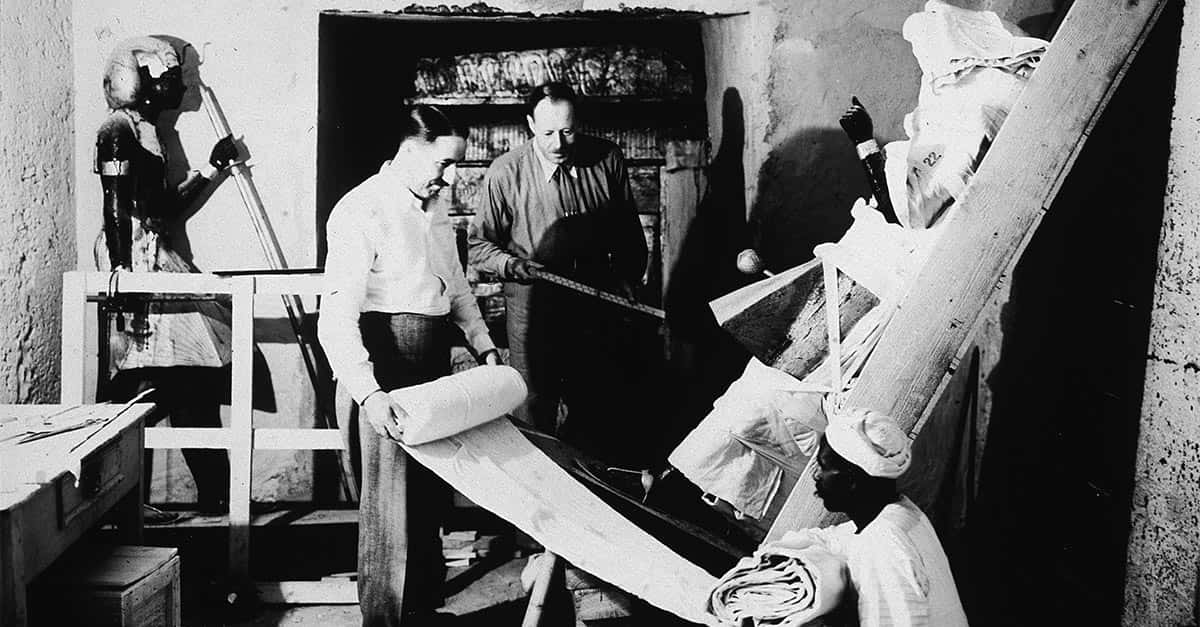Woman Of The Skies
For a woman like Amelia Earhart, the sky was never the limit. Born during a time when social norms restricted women, she blazed through. Tragically, though, her story ended amidst the winds of the Pacific skies. This is her story.

Birth And Heritage
Amelia Mary Earhart was born in 1897 on July 24, in Atchison, Kansas, at her grandfather's home. He was a judge and bank president who initially disapproved of her parent's marriage and was unhappy about her father Edwin's legal career prospects.
 Unknown Author, Wikimedia Commons
Unknown Author, Wikimedia Commons
Childhood Dynamics
The Earhart sisters developed different personalities early on. Amelia emerged as the dominant sibling, while Grace Muriel followed dutifully. They were nicknamed "Meeley" and "Pidge" and maintained these childhood names well into their adult years.
 NBC Photo-NBC Radio, Wikimedia Commons
NBC Photo-NBC Radio, Wikimedia Commons
Unconventional Upbringing
Their mother, Amy Earhart, rejected traditional female constraints. Hence, the girls spent days climbing trees, hunting rats with rifles, and building collections of worms and moths. But their grandmother disapproved of this unladylike behavior.
 Underwood & Underwood (active 1880 – c. 1950), Wikimedia Commons
Underwood & Underwood (active 1880 – c. 1950), Wikimedia Commons
First Taste Of Flight
Amelia's uncle helped her build a wooden ramp in 1904. This was a copy of a roller coaster she'd seen in St. Louis. Launching from the family's toolshed roof in a wooden box-sled, she crashed but was thrilled. Amelia exclaimed, "Oh Pidge, it's just like flying!"
 Los Angeles Daily News, Wikimedia Commons
Los Angeles Daily News, Wikimedia Commons
Aviation Introduction
Then came the Iowa State Fair in 1908. Here, the ten-year-old Amelia encountered her first aircraft. When her father urged her to fly, she rejected the decaying airplane, calling it "a thing of rusty wire and wood". Instead, she preferred to ride the merry-go-round.
 Iowa State Fair Historic Spectacles | Iowa State Fair 2015 by Iowa PBS
Iowa State Fair Historic Spectacles | Iowa State Fair 2015 by Iowa PBS
Educational Journey
While living with their grandparents in Atchison, their mother homeschooled the Earhart girls. Little Amelia grew deeply in love with reading and books during this time. She would spend hours upon hours perusing the wide range of books in the family's vast library.
 L. Prang & Co., Wikimedia Commons
L. Prang & Co., Wikimedia Commons
Family Challenges
By 1914, her father's struggle with alcoholism forced his retirement from the Rock Island Railroad. The following loss of their grandmother and the auction of the family estate marked what Amelia later described as her childhood's end.
 Hook, William Edward, Wikimedia Commons
Hook, William Edward, Wikimedia Commons
Wartime Transformation
Earhart's visit to Toronto during Christmas in 1917 changed her life course. She witnessed the return of wounded WWI soldiers and decided to join the Red Cross as a nurse's aide at Spadina Military Hospital. Here, military pilots' stories sparked her interest in aviation.
 Unknown Author, Wikimedia Commons
Unknown Author, Wikimedia Commons
Health Setback
Sadly, the 1918 Spanish flu pandemic struck Earhart while nursing in Toronto. She battled pneumonia and severe sinusitis that required painful operations without antibiotics. However, she learned the banjo and studied mechanics during the year-long recovery period.
 Underwood & Underwood, Wikimedia Commons
Underwood & Underwood, Wikimedia Commons
Aviation Beginnings
Something interesting happened on December 28, 1920. At Emory Rogers Field, Earhart paid $10 for a flight with Frank Hawks that would change her life completely. After only a few hundred feet of flight, she was determined to become a pilot herself.
 Smithsonian Institution, Wikimedia Commons
Smithsonian Institution, Wikimedia Commons
Flight Training Begins
So, Earhart began flying lessons with Neta Snook at Kinner Field in Long Beach in January 1921. In order to save $1,000, she took up many jobs, such as telephone operator, truck driver, and even photographer. Though reluctantly, her mother helped pay for the training.
First Plane Purchase
Six months into training, Earhart ignored instructor Snook's advice and bought a secondhand Kinner Airster for $2,000. She painted it chromium yellow, which led to the nickname: The Canary. Earhart also deliberately stained her new leather flying coat to age it.
 Amelia Earhart, Wikimedia Commons
Amelia Earhart, Wikimedia Commons
Altitude Breakthrough
A new world altitude record was set for female pilots when Earhart flew her yellow Airster to 14,000 feet on October 22, 1922. The following spring, she became the sixteenth American woman to obtain a pilot's license from the Fédération Aéronautique Internationale, license #6017.
 Amelia Earhart Departs on Solo Flight Across Atlantic, May 20, 1932 by Smithsonian Nati
Amelia Earhart Departs on Solo Flight Across Atlantic, May 20, 1932 by Smithsonian Nati
Financial Setbacks
Earhart's legacy was exhausted by the mid-1920s due to a faulty Gypsum mine investment. Due to financial trouble, she sold her Kinner aircraft and purchased a yellow Kissel "Speedster" vehicle, which she dubbed "Yellow Peril," after looking for fresh prospects.
 Wide World Photos, Wikimedia Commons
Wide World Photos, Wikimedia Commons
Transcontinental Journey
Her parents ultimately divorced in the year 1924. After this, Earhart drove her mother in "Yellow Peril" from California through western states to Banff, Alberta, finally settling in Boston. There, a successful sinus surgery provided her temporary relief from health issues.
 Wide World Photos, Wikimedia Commons
Wide World Photos, Wikimedia Commons
Boston Career Start
When in Boston, Earhart worked as a teacher and social worker at Denison House Settlement. She maintained aviation connections and became the vice president of the American Aeronautical Society's Boston chapter. This let her fly from Dennison Airport in Quincy.
 Unknown Author, Wikimedia commons
Unknown Author, Wikimedia commons
Atlantic Crossing
Amelia was chosen to be the first woman to fly over the Atlantic in 1928 in Fokker F.VIIb/3m "Friendship". While Amelia did not pilot the plane once during the 20-hour, 40-minute flight, she hinted at her fate by saying, "Maybe someday I'll try it alone".
 Amelia Earhart First Female Aviator Flies Solo Across Pacific in 18 Hours, 1932 by Fred Longhat
Amelia Earhart First Female Aviator Flies Solo Across Pacific in 18 Hours, 1932 by Fred Longhat
Celebrity Status
She was later called "Lady Lindy" by the media because she looked like Charles Lindbergh. After her successful Atlantic passage, Earhart became famous and began giving talks, promoting products, and collaborating with publisher George Putnam. He handled her public persona.
 Unknown Author, Wikimedia Commons
Unknown Author, Wikimedia Commons
Promoting Women's Aviation
Earhart also became an associate editor at Cosmopolitan magazine. She wanted to use her platform to advocate for aviation and women's roles in flying. Earhart helped establish the Ninety-Nines, an organization for female pilots, and became its first president in 1930.
 The Ninety-NInes History of Women Aviators by The Ninety-Nines, Inc.
The Ninety-NInes History of Women Aviators by The Ninety-Nines, Inc.
Marriage Revolution
In 1931, Earhart married George Putnam, insisting on a nontraditional marriage. Revolutionary for the time, her wedding day letter sought personal space, maintained her surname, and also chose to reject traditional fidelity expectations.
 International News Photos, Wikimedia Commons
International News Photos, Wikimedia Commons
Last Atlantic Flight
Our young pilot left Harbour Grace, Newfoundland, on her Lockheed Vega on May 20, 1932. She was seen as the first woman to fly solo across the Atlantic. However, due to severe weather conditions, she had to land in Northern Ireland after a brutal 15 hours.
 Amelia Earhart First Female Aviator Flies Solo Across Pacific in 18 Hours, 1932 by Fred Longhat
Amelia Earhart First Female Aviator Flies Solo Across Pacific in 18 Hours, 1932 by Fred Longhat
International Recognition
Now, this solo Atlantic flight earned Earhart recognition as the recipient of the Distinguished Flying Cross from Congress, France's Legion of Honor Cross, and the National Geographic Society's Gold Medal. She also developed a close friendship with First Lady Eleanor Roosevelt.
 Amelia Earhart First Female Aviator Flies Solo Across Pacific in 18 Hours, 1932 by Fred Longhat
Amelia Earhart First Female Aviator Flies Solo Across Pacific in 18 Hours, 1932 by Fred Longhat
Hawaiian Achievement
Another significant event occurred on January 11, 1935, when Amelia Earhart flew alone from Honolulu to Oakland. Listening to broadcasts of the Metropolitan Opera helped her unwind throughout the transoceanic flight in her Lockheed 5C Vega.
 Harris & Ewing, Wikimedia Commons
Harris & Ewing, Wikimedia Commons
Mexican Connections
Two further records were set by Earhart in 1935 in her reliable Vega. This was also known as "old Bessie, the fire horse". After setting out on a solo flight from Los Angeles to Mexico City for the first time, she made the nonstop trip from Mexico City to Newark.
 New York World-Telegram and the Sun Newspaper, Wikimedia Commons
New York World-Telegram and the Sun Newspaper, Wikimedia Commons
Academic Influence
Sometime in 1935, Earhart took the position of a faculty member at Purdue University, where she worked as a technical advisor to the aeronautics department and a career counselor for female students. Later, the university funded Lockheed Electra 10E for her intended world flight.
 Orion Lawrence Foster, Wikimedia Commons
Orion Lawrence Foster, Wikimedia Commons
California Years
Tragedy kept following her. After a fire destroyed their Rye house in late 1934, Earhart and Putnam transferred to California. They settled in Toluca Lake, between Warner Brothers and Universal Studios. Here, Putnam was the head of the editorial board for Paramount Pictures.
 Tekniska Museet, CC BY 2.0, Wikimedia Commons
Tekniska Museet, CC BY 2.0, Wikimedia Commons
Aviation Education
At Burbank Airport, Earhart founded the Earhart-Mantz Flying School in 1935 in collaboration with Paul Mantz. Putnam handled advertising for the school through United Air Services. The school largely specialized in instrument flying utilizing Link Trainers.
 Los Angeles Times, CC BY 4.0, Wikimedia Commons
Los Angeles Times, CC BY 4.0, Wikimedia Commons
Global Ambition
She then started preparing for her most daring endeavor in the year 1936. It was to circumnavigate the world close to the equator. Earhart would ultimately become the first woman to finish the 29,000-mile expedition, which would help promote her next book.
 Luciaroblego, CC BY-SA 4.0, Wikimedia Commons
Luciaroblego, CC BY-SA 4.0, Wikimedia Commons
Hawaii Setback
Unfortunately, in March 1937, the Electra crashed in Hawaii after takeoff from Luke Field. This ended the first attempt to complete a round-the-world flight. The accident damaged the landing gear and propellers, requiring the plane to be shipped to Lockheed for repairs.
 JRdxbcmc, CC BY-SA 4.0, Wikimedia Commons
JRdxbcmc, CC BY-SA 4.0, Wikimedia Commons
The Last Horizon
After the repairs were done, on June 1, 1937, Earhart set out from Miami for her second attempt at a world flight. Before arriving in Lae, New Guinea, she and navigator Fred Noonan successfully traveled 22,000 miles this time. They flew from west to east.
 SDASM Archives, Wikimedia Commons
SDASM Archives, Wikimedia Commons
Last Takeoff
July 2, 1937, 10:00 am local time, Earhart and Noonan once again departed Lae Airfield in their heavily loaded Electra. Their destination was Howland Island, a tiny Pacific speck just 2,556 miles away, with approximately 1,100 gallons of fuel.
 Originally from, Wikimedia Commons
Originally from, Wikimedia Commons
Communication Challenges
During their approach to Howland Island, Earhart was able to transmit to the USCGC Itasca but was unable to receive any of their responses. The ship's crew heard her increasingly worried calls, which indicated that they were running low on fuel around 7:30 am.
 Amelia (2009) trailer by The Movie Planet
Amelia (2009) trailer by The Movie Planet
Final Transmission
Based on the last known radio communication sent by Amelia Earhart, it was stated that they were flying north and south across Howland Island along lines 157-337 at around 7:58 am. The signals from Itasca were powerful, but she was unable to tell their direction.
 Amelia (2009) trailer by The Movie Planet
Amelia (2009) trailer by The Movie Planet
Search Operations
Apparently, the U.S. Coast Guard and Navy conducted the most costly and extensive air and sea search in American history. It is said to have cost them about $4 million. The search lasted 17 days until July 19, 1937, but no tangible proof was ever located.
 United States Coast Guard, photographer unknown (possibly Bob Gates), Wikimedia Commons
United States Coast Guard, photographer unknown (possibly Bob Gates), Wikimedia Commons
Radio Mysteries
Many radio operators claimed to have heard Earhart's distress calls in the days after her disappearance. The search was complicated due to the fact that many turned out to be hoaxes. All these reported false signals hindered the search for the aircraft.
 Radio Operator (1940) by British Pathé
Radio Operator (1940) by British Pathé
Legal Conclusion
It was George Putnam who fought to maintain hope and helped finance private searches of nearby Pacific islands. However, on January 5, 1939, Earhart was officially declared dead in absentia. With this, Putnam managed her estate and continued funding search efforts.
 Official family photographer c. 1930s, Wikimedia Commons
Official family photographer c. 1930s, Wikimedia Commons
Enduring Theories
So, many theories emerged in response to the disappearance. According to most historians, they crashed into the Pacific near Howland Island after running out of gasoline. The site of the Electra is unknown; however, it is most likely 17,000 feet below the surface.
Gardner Island Possibility
Some researchers even suggest that Earhart and Noonan may have landed on Gardner Island (now known as Nikumaroro) when they were unable to find Howland. However, no solid proof has yet been found, even after numerous trips to this isolated island.
Japanese Capture Theory
Another theory states that Japanese forces captured Earhart and Noonan in the Marshall Islands. Several of Earhart's relatives believed in Japanese involvement, citing unnamed witnesses. These included troops and Saipan natives, though evidence remains unconfirmed.
 Futabaya Gofukuten, Wikimedia Commons
Futabaya Gofukuten, Wikimedia Commons
Recent Investigations
Recently, in 2024, Deep Sea Vision used sophisticated sonar to find what appeared to be Amelia Earhart's plane. This was located 16,000 feet below the surface, close to Howland Island. On closer examination, though, it turned out to be just a rock formation.
 Amelia Earhart 80 Year Mystery Solved? by KQ2
Amelia Earhart 80 Year Mystery Solved? by KQ2
Memorial Recognition
In 1968, Earhart was inducted into the National Aviation Hall of Fame, followed by the National Women's Hall of Fame in 1973. A couple of landmarks, schools, roads, and even a lunar crater now bear her name worldwide.
 Amelia Earhart's lasting legacy by FOX59 News
Amelia Earhart's lasting legacy by FOX59 News
Aviation Influence
This woman's accomplishments inspired over 1,000 female pilots of the Women Airforce Service Pilots during WWII. Similarly, the Ninety-Nines organization she founded continues supporting women in aviation through scholarships and education programs.
 U.S. Air Force photo, Wikimedia Commons
U.S. Air Force photo, Wikimedia Commons
Published Works
As an accomplished writer, Earhart produced two books during her lifetime. One was 20 Hrs. 40 Min. which is about her Atlantic crossing experiences. And the other, The Fun of It, which explores women in aviation. Her final book compiled her last flight journals.
Annual Celebrations
The annual Amelia Earhart Festival has been held in Atchison, Kansas, since 1996. Artifacts, photographs, and personal belongings from her extraordinary life are preserved in her birthplace museum, which is run by the Ninety-Nines.
 Amelia Earhart Festival and Discussion Over First Sonar Image by KQ2
Amelia Earhart Festival and Discussion Over First Sonar Image by KQ2











